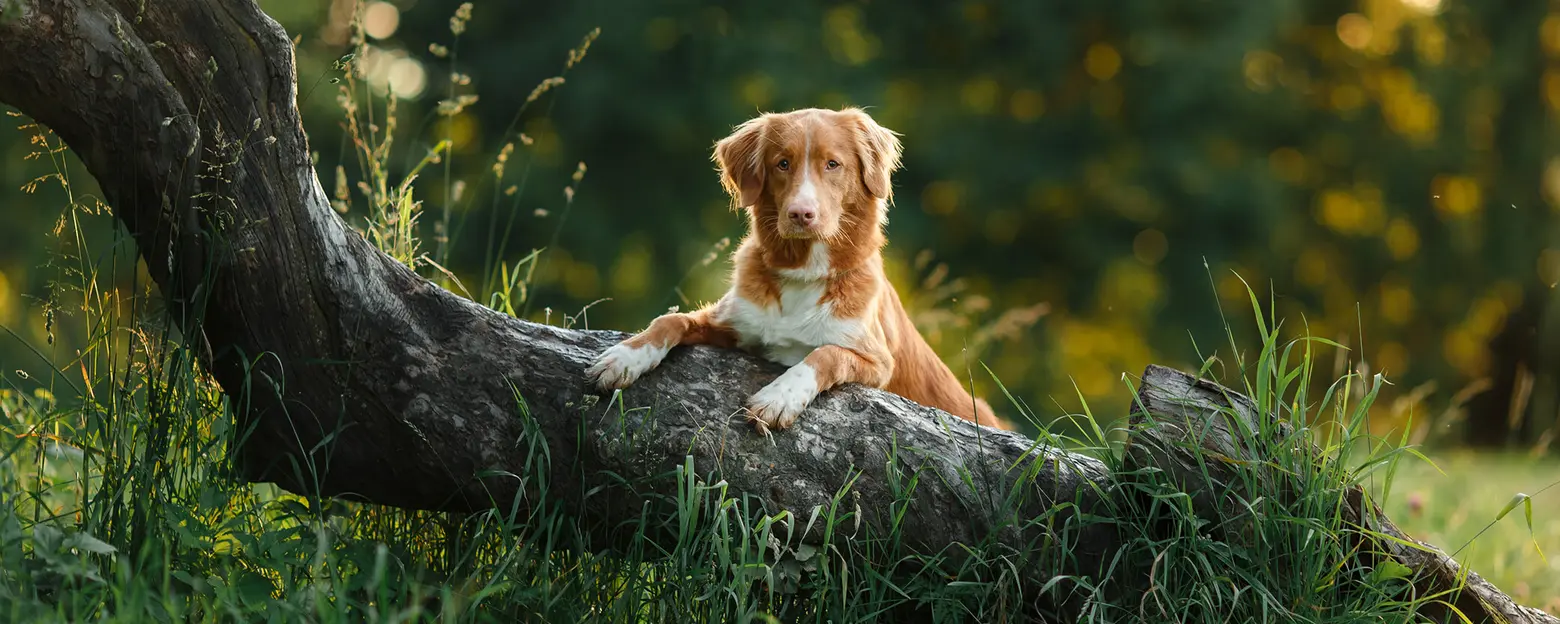Causes of hip dysplasia
The causes of hip dysplasia are multifactorial, so there are different aspects that have an influence on its development. They can lie in a genetic disposition, incorrect feeding and persistent physical overload. Some dog breeds are more frequently affected, e.g. Great Danes, German Shepherds and Retrievers. Even if there is a genetic predisposition, sometimes no symptoms occur, but the predisposition can be passed on accordingly.
The hip joint consists of a socket and the joint head as well as the joint capsule and the cartilage. The socket is located in the pelvis and the head of the femur lies in its cavity. The articular cartilage lines the bones to ensure smooth movement with its shock-absorbing properties. The ligaments and tendons as well as the muscles hold the pelvis and thigh together and ensure mobility.

In hip dysplasia, however, the head of the femur does not fit exactly into the joint socket, which disturbs the normal course of movement. This causes continuous incorrect loading, which eventually leads to rapid wear due to the wearing away of the joint cartilage.
In predisposed breeds, too rapid growth in puppyhood can also favour hip dysplasia. This is usually caused by incorrect feeding, which can cause a puppy to grow too fast and develop skeletal abnormalities. The correct calcium-phosphorus ratio in the growth phase plays an important role here, as these two minerals are crucial for a stable bone structure. Too high an intake can lead to brittle bones, too low an intake causes soft, unstable bones. Growth defects are the result.
Symptoms of hip dysplasia
A deformity of the hip joint causes a persistent incorrect load, which causes a permanent overuse of the joint cartilage. This wear and tear of the cartilage causes arthrosis. First, changes in gait become visible because hip movement is restricted. The pelvis may swing noticeably. Due to the pain, lameness can develop in the affected dog as a relieving posture, but standing up and lying down can also cause problems. When walking, the dog may even stop or sit down more often to relieve the pressure on its joints. Sometimes a grinding noise can be heard in the hip area during some movements and the animal reacts painfully to touch in this area.
Treatment of hip dysplasia
Hip dysplasia cannot be cured. Appropriate treatment can only serve to improve the joint function and relieve pain. The veterinarian decides on the further therapy on the basis of the X-ray findings. In certain cases, an operation to stabilise the hip can be useful to prevent or limit further wear.
However, this depends on the severity of the disease, the age and the constitution of the animal. The use of an artificial femoral head is also possible, although this surgical intervention is more complex and involves a subsequent rest period of several weeks. Physiotherapeutic treatment methods can always be used as a support. With the help of an underwater treadmill, for example, muscles can be built up in a gentle way, mobility can be maintained and weight can be reduced.
Prevention of hip dysplasia
Too rapid growth of the bone structure is essential, especially in large breed puppies, through correct feeding. The age, breed and activity of the four-legged friend should be included in the requirements. To protect the joints, young dogs should not be exposed to excessive physical stress such as climbing stairs or jumping. Suffering dogs should refrain from sporting activities. Excess weight should be avoided at all costs in order to relieve the joint as much as possible from further influences. Dogs affected with HD should be excluded from breeding in order not to pass on this deformity to their offspring.
However, the dog owner can take some additional measures besides a species-appropriate, healthy and balanced diet to alleviate the symptoms in order to enable the dog to enjoy more exercise and quality of life. To support the musculoskeletal system and joint processes, special supplementary feeds with joint-active, high-dose ingredients such as omega-3 fatty acids, vitamin E, green-lipped mussel, chondroitin, devil's claw and collagen II can be given at any age.

